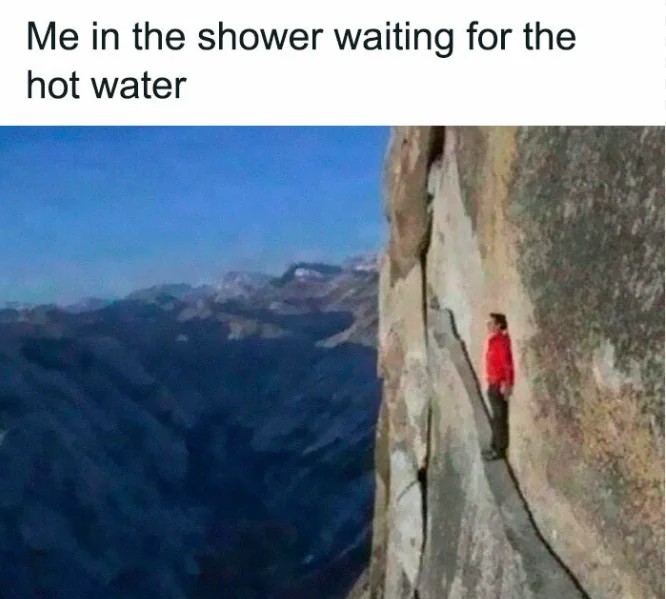this post was submitted on 18 Apr 2024
671 points (100.0% liked)
196
16511 readers
2069 users here now
Be sure to follow the rule before you head out.
Rule: You must post before you leave.
founded 1 year ago
MODERATORS
you are viewing a single comment's thread
view the rest of the comments
view the rest of the comments

The water is just pumped around the circuit, fresh water only enters the circuit when a tap is opened somewhere.
Energy losses are at a minimum, the pipes for the circuit are isolated with 40mm Armaflex all around.
The pumping speed is regulated by temperature difference. Water leaving the heat buffer is targeted to never be more than two degrees C warmer than water returning from the loop. That usually results in the pump drawing one to three watts.
The 1000 liter heat buffer collects heat from the wood stove, the heatpump and the solar thermal panels and transfers it to hot water and the underfloor heating. The water in the actual hot water circuit is maybe 15 Liters or so.
Heat sources are automatically started depending on their pricing, solar thermal first, then heatpump when photovoltaics is pushing excess power, then heatpump when the grid is cheap and of all of those aren't available I get an alert on my phone that it's a good time to light the wood stove. And if I don't do that, the heatpump will run at whatever grid pricing is current. If the heatpump fails and the sun isn't shining and I'm not there to light the stove, the whole system will fall back to freeze protection with a simple heater and unregulated pumping.
Heating the whole house to 23°C and having enough hot water for two people costs maybe around 70€/month across the year, so, it's okay price wise.
Thanks for those details! That sounds like a great system and beats my failsafe of heating a big pot of water on the woodstove
Hey, the pot of water solution is assembled in five minutes if you already have a pot and a stove, so resource wise you've got a bit of an advantage.
I've spent a year alone on tinkering with the automation in regard to power prices and solar production, because I had to wait for every season and combination of temperatures outside, wind and solar radiation to... well, occur. It's probably a bit overengineered but I like this kind of thing and using the available resources to an optimum (and having the stats to prove it 😁) is just an enjoyable past time for me.